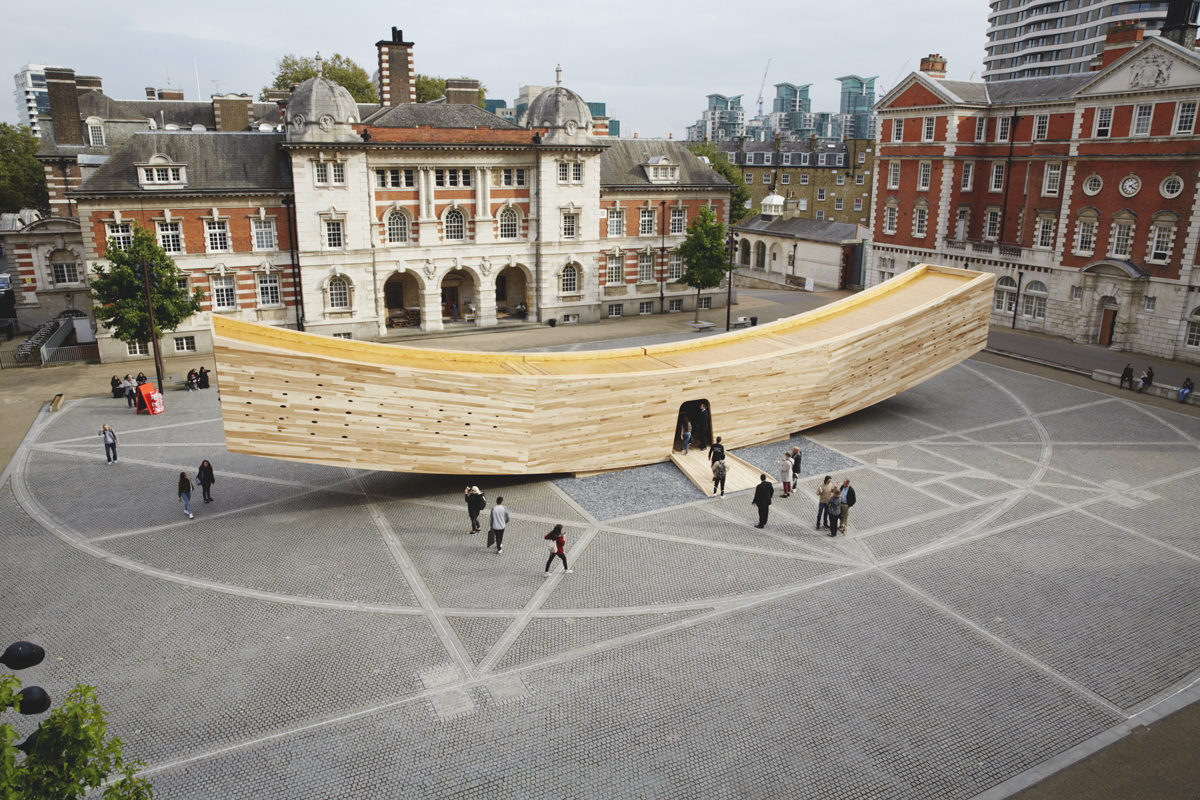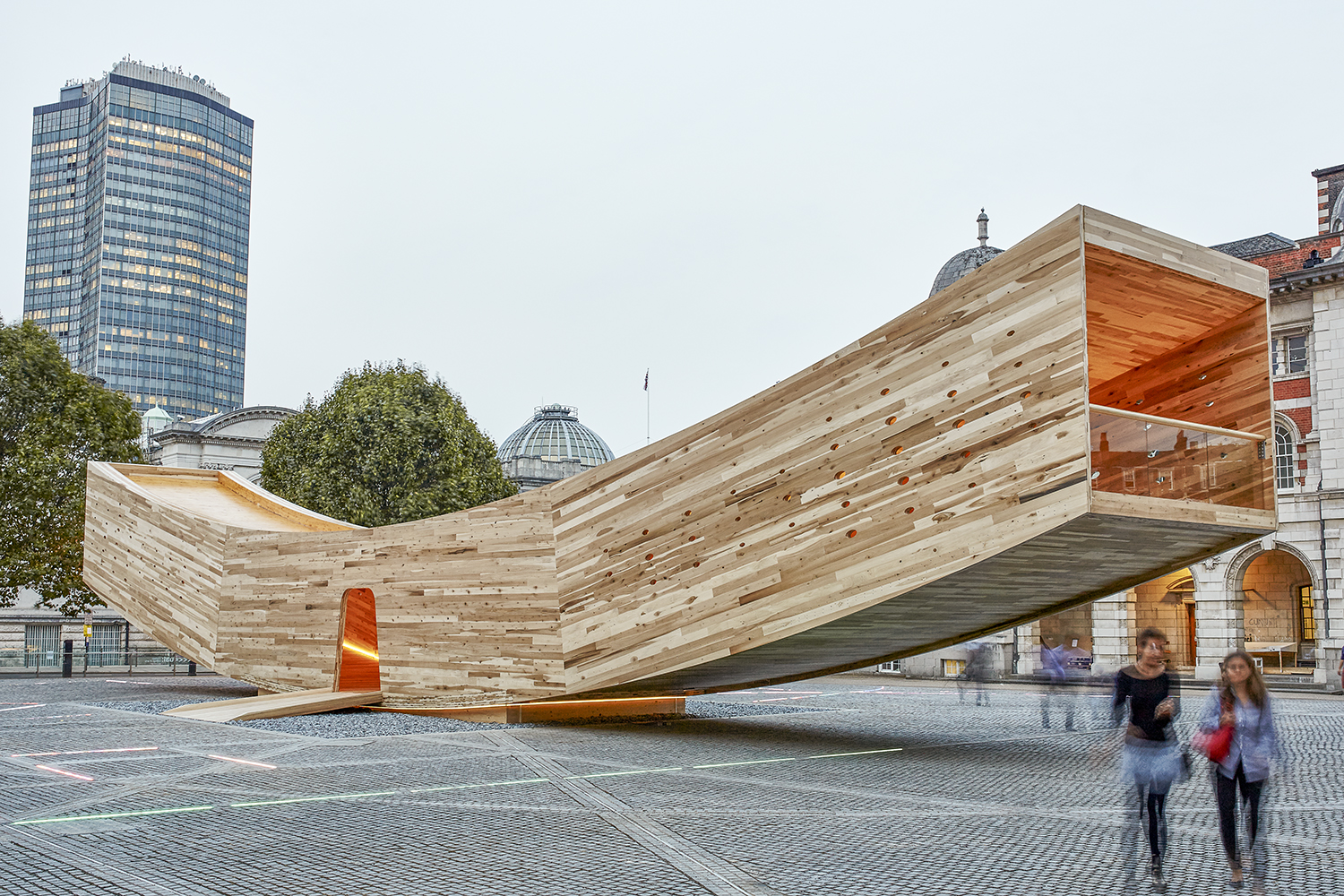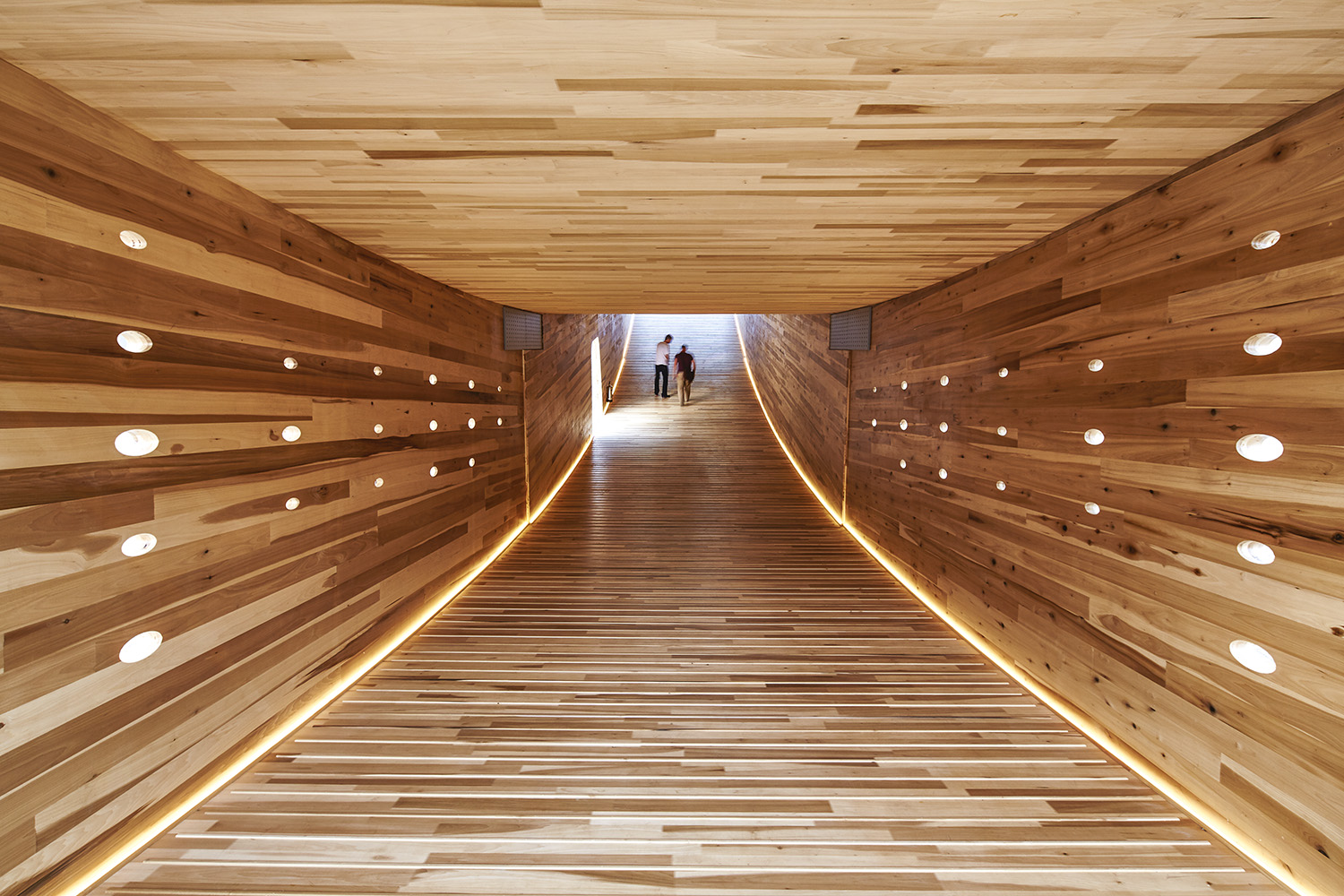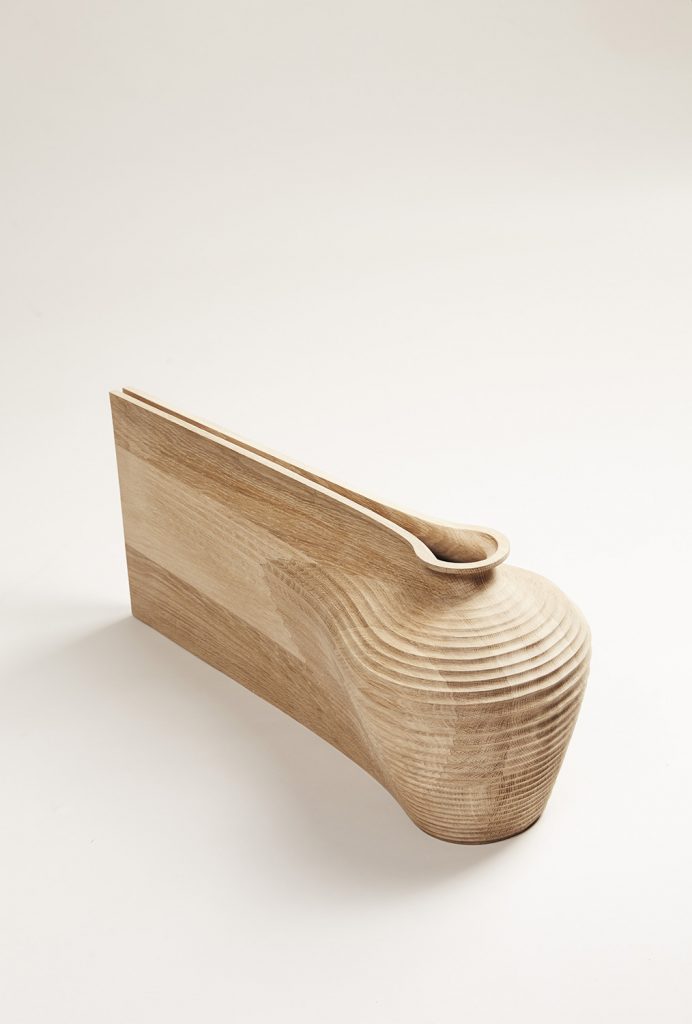MATERIAL SELECTION CAN BE CHALLENGING FOR DESIGNERS. OFTEN INFORMATION CAN BE OVERWHELMING AND UNNECESSARILY COMPLEX AND MANY PREFER TO STICK TO WHAT THEY KNOW RATHER THAN FEEL THAT THEY CAN EXPLORE ALTERNATIVES WITH CONFIDENCE. AMERICAN HARDWOOD EXPORT COUNCIL IS ONE ORGANISATION THAT OFFERS INSPIRATION, ADVICE AND SUPPORT TO DESIGNERS AROUND THE WORLD TO HELP THEM SELECT A MATERIAL THAT IS TRULY FIT FOR PURPOSE
PHOTO CREDIT AS NOTED
(For Thai, press here)
33% of the United States is made up of forest land. In the US, forests, as a natural resource, are unique for a number of reasons, one being the fact that the forests there have over four million owners. In their lifetime, these owners would have sold hardwood from their forests only once or twice. This surprising number is a result of the country’s on going generations of sustainable forest management, which encompasses highly careful legal logging, which allows forestation to take place naturally, causing the United State’s forestland to outgrow its annual timber harvesting numbers.
While the majority of trees grown inside the United States are processed and used domestically, the demand for American hardwood from the global market is incredibly high. Various types of hardwood suit different utilities, for instance, American white oak is the most popular exported wood for its strong grains, light color and multi-functionality that makes it the perfect material for Scandinavian furniture.
American walnut is known as designers and architects’ darling due to the material’s physical qualities that bring luxury and elegance to every space. Thanks to their unique beauty, American tulipwood and red oak also offer a great variety of usages from large-scale architectural projects to furniture design.
Behind the premium quality of American wood is the highly complicated process of selection, kiln drying, final surface coating, an incredibly high standard of quality criteria as well as a very strict scoring system by the National Hardwood Lumber Association.
American Hardwood Export Council (AHEC), the leading international trade association for the American wood industry, is the key supporter of hardwood manufacturers in the United States. AHEC’s role and activities also extend to designers and architects worldwide who use wood in their designs. With its own database of wood-based design projects from around the world, AHEC provides members who are design professionals up-to-date market information, as well as comprehensive technical assistance and environmental advice (contact email: info@ahec-china.org).
CASE STUDIES
Jomecowood

In 2007, Joseph Teoh, interior designer and founder of Malaysia-based furniture design studio, Jomecowood, received over 60 shipping containers filled with white oak, ash and American walnut from his business partner. “I think bringing nature and natural materials into a living space is important.” Teoh admits that he has a personal obsession for wood when it comes to design. “Wood brings warmth and stylishness to spaces. 30% of my design use wood as a pivotal element. I particularly love American hardwood because of its consistency of quality and proper, standardized drying process.”
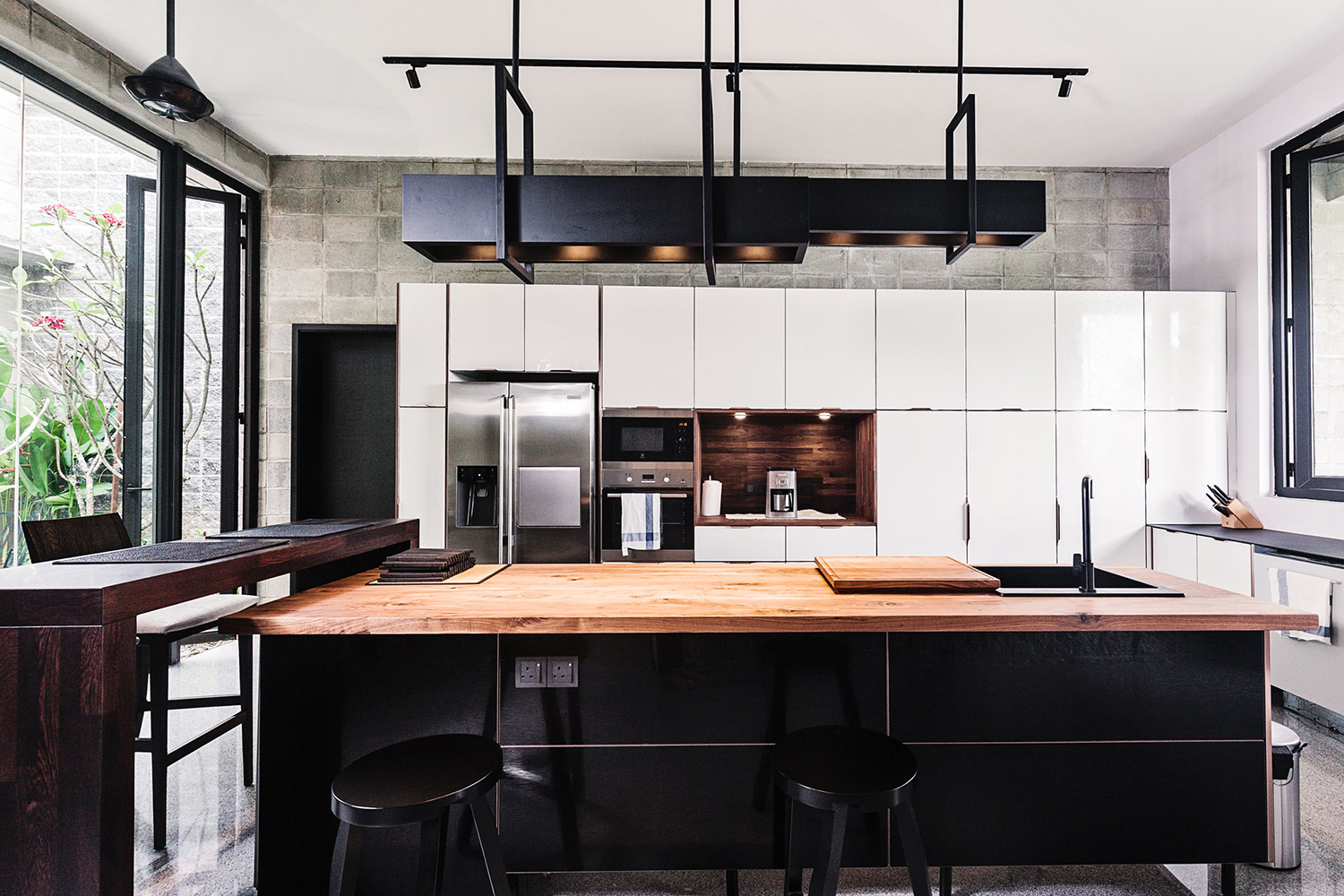
Photo courtesy of American Hardwood Export Council (AHEC)
The Smile
Photo: Tom DonaldThe undulating building designed by Alison Brooks Architects was an exhibition space inside London Design Festival 2016. The structure of the building was constructed from CLT (Cross-Laminated Timber), which was made entirely of American tulip. The Smile was created as a collaborative project between London Design Festival, Alison Brooks Architects, AHEC and Arup.
Read more about ‘The Smile’ at art4d.com/2016/09/the-smile
Vessel
Photo: Petr Krejci Photography
The sculpture is made of white oak, following the request of the late architect, Zaha Hadid, who specifically assigned Gareth Neal to create a unique dining utensil collection. The work is a part of AHEC’s Wish List project.
Bloomberg’s European Headquarters

Photo: Nigel Young / Foster + Partner
Designed by Foster + Partners, Bloomberg’s European Headquarters was the winner of 2018’s RIBA Stirling Prize. It achieved the highest BREEAM design-stage score (98.5%) and is acknowledged as the world’s most sustainable office building. 1,852 square meters of red oak were used for the construction of the building’s Vertex zone, which reveals itself before visitors’ eyes as soon as they set foot into the lobby. In addition to the building’s innovative features, including the use of renewable energy, as well as power efficiency and low carbon dioxide emissions, the American red oak does an immaculate job in bringing a welcoming, warm aesthetic to the interior space.

